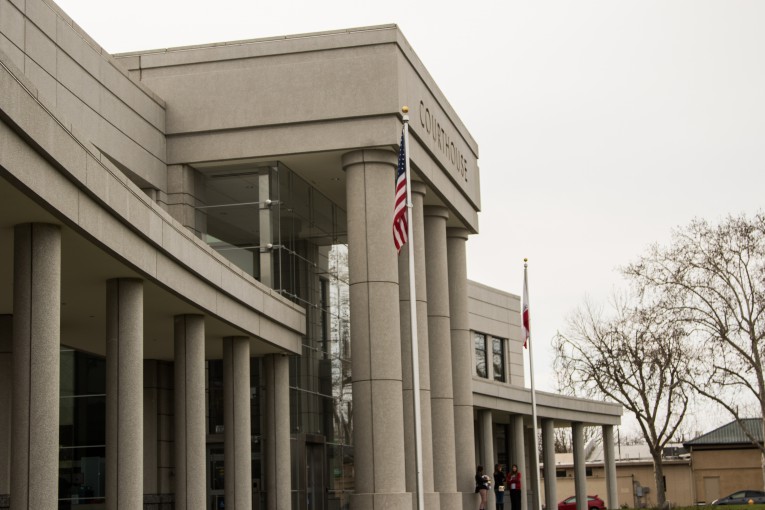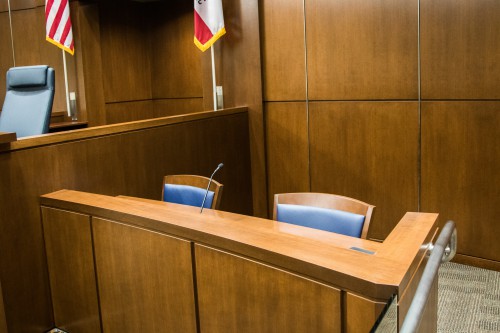
 By Prince Sahota
By Prince Sahota
The trial of the People v. Carlos Juarez concluded the evidence portion this July 13, 2016. The trial took place after an alleged burglary in Winters, California, in October of 2014. Property was taken from inside the home, as well as a Pontiac GTO, and the home was vandalized. The defendant is charged as follows: burglary under Penal Code section 459, vandalism consistent with Penal Code section 594, stealing a vehicle according to Vehicle Code section 10851, and shoplifting as described in Penal Code section 490.5. The loss is estimated to be $10,000.
The People called witness “B” to testify. He worked with the Yolo County District Attorney’s Office in the High Tech Unit. Prior to this, he worked with the Davis Police Department for 27 years. He testified to using Cellebrite technology to extract data from cell phones.
He said that he examined a cell phone on July 9, 2015, by using a pattern to unlock the device. He said that Cellebrite generated a 3,000 (or more) page report. He stated that a “physical dump” of data occurred.
The defense lawyer cross-examined the witness, particularly about the physical data extraction. Witness B said the report went to the district attorney’s office.
The prosecutor asked if the GPS on the cell phone revealed the phone’s location rather than a person’s, and this witness said yes.
Next, the People called witness “G” to the box for statements. She was a community service officer with the city of Winters at the time of the incident. She testified that she responded to a burglary incident in Winters. She described that the first thing she observed was the front door with a single pane broken window. She said she searched for an object used to enter the victim’s home, and then looked inside.
She followed this up with a canvass of the neighborhood, meaning she spoke with neighbors to see if they knew anything about the incident. She went to five homes.
Witness G entered a stolen laptop into evidence. Specifically, the car was entered into a statewide database. She remembered seeing the victim shaken.
Police discovered the car in Vacaville, after the defendant supposedly called victim “S” to ask why he was accused of stealing. Witness G made a list of the stolen property. She pointed out that crime victims initially make short lists of stolen items and then remember more as time passes. She said a woman found a phone belonging to victim S. The defendant’s Facebook page was open and this phone was put into evidence.
The defense lawyer reviewed the description of the crime scene with witness G. This witness said no fingerprints were found. The witness noted that victim S’s vehicle was found by the Vacaville Police Department by Officer “M.” The defense lawyer asked if the victim’s participation in the investigation would tamper with the evidence. She asked if victim S was admonished to stay away from the investigation and the witness said he was.
The defending lawyer declared the car was found outside of the Yolo Superior Court jurisdiction. The concept of the chain of custody was brought up. This refers to the record of different custodians of property through different times to make sure evidence does not get altered.
The People called “GB,” a corporal with the Winters Police Department, to explain his role in the investigation of the burglary incident. He informed the court that he was a supervisor who investigated crimes. He was dispatched to the crime scene in October of 2014 at 6:28 p.m.
Witness GB recalled that, when observing the crime scene, he opened a door latch. Next, he walked to the side door. Pursuant to his investigation, he used a “room by room” strategy to find out the exact details of what happened. He characterized the home as being in disarray, and he noticed that the lock to the master bedroom was broken. He heard about questionable women being present at the victim’s home prior to the incident.
The defense lawyer cross-examined GB. The first point she made was that the victim was absent from his home from 5:00 a.m. to 6:00 p.m. when everything unfolded. GB said the women were from Cache Creek Casino; however he said that he never knew of a man with the women implied to be suspects.
The lawyer asked GB why he didn’t study video surveillance at the casino. When GB was asked why tissues were not booked into evidence, he maintained that the Department of Justice would not have accepted it. When pushed for answers about not searching for fingerprints, he responded that he thought the Vacaville Police Department already received prints from the community service officer.
GB was asked to justify why he did not search the defendant’s home. He said the defendant had no stable place to live so he could not locate him. On further exam by the prosecutor, GB said he did not have a warrant to search Mr. Juarez’s home. However, GB said the defendant refused to speak with him when he went to the ex-wife’s home.
The defendant testified on his own behalf. In October of 2014, he said he was laid off of his job, and picked up work at different places that were hiring. He eventually worked at a bar to cover debt. He stated that he was invited to a friend’s party. Mr. Juarez invited his friend, victim S, to join him. Afterwards, the defendant said, the victim drove him around.
After returning home, they decided to go to Cache Creek Casino. While there, the defendant met a lady name “R.” On the drive home the defendant invited the woman, through the victim’s phone, to said victim’s residence.
The lady R arrived at victim S’s home with a female friend and a man name “GX.” Drugs were being used in S’s Pontiac GTO parked in the garage of his home, so he asked them to leave.
Following the burglary incident, Mr. Juarez testified that he allegedly returned shoes belonging to a Vacaville store for GX, and gave GX the cash.
The prosecutor cross-examined the defendant. When she asked him why he did not cooperate with police he said that he was watching his children and did not know why the police were in front of him. He said he did not drive the GTO because it was stick shift.
The defendant said he was accused of the crime because his description matched that of the man, GX, who was at the victim’s home.
